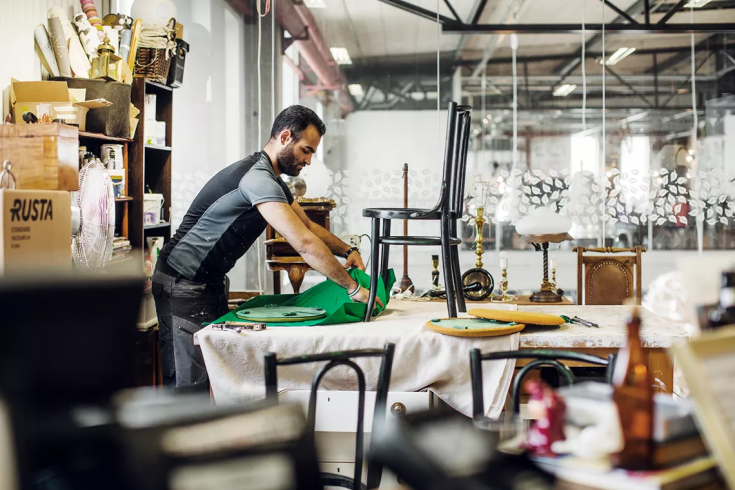Waste prevention: 3 key learnings from the Styrian re-use map

Re-use is a crucial measure in achieving waste prevention. Austrians, for example, could reduce up to 23,700 tons of waste annually through re-use and repair activities.
Re-use is at the top of the European waste hierarchy. This sector stimulates regional initiatives and creates numerous jobs.
In the SUBTRACT project, seven partners exchanged experiences on how to support SMEs working in the re-use sector. They shared inspiration and good practices from all corners of Europe. For example, Retuna, a re-use shopping mall near Stockholm in Sweden, was especially inspiring for the Austrian project partner. Retuna is the world's first recycling mall. It gives a new life to old items through repair and up-cycling. Everything sold there is recycled or re-used, or organically and sustainably produced.
A map with re-use shops
With inspiration from the SUBTRACT project, the Provincial Government of Styria in Austria designed an interactive online map. The map provides potential customers with an up-to-date overview of regional re-use shops, their products and services.
A click on an individual enterprise pops up a window with information about the address, the range of goods and services offered, and the opening hours. There are more than 80 registered businesses on the map already, and the map is expanding. The goal is to include all Styrian businesses working in the re-use sector.
Next steps for re-use in Styria
By 2022, two other actions will be implemented in the Austrian region thanks to the SUBTRACT project:
- The Styrian Re-use Autumn 2022, a high-profile event will increase public awareness about re-use and the recognition of the re-use enterprises in the region
- A guide for re-use operators and start-ups will be available, comprising legal and organisational requirements for SMEs working in the re-use sector
3 key learnings for re-use and waste management
We are giving the floor to Dr. Ingrid Winter, the Head of Department at the Office of the Regional Government of Styria in Austria. She has given us some insights into the lessons learnt from her experience implementing this project.
Learning 1: use digital tools
Matching supply and demand of reusable goods is difficult and should be optimised with digital tools. The increased use of digital technologies seems to be a key factor for re-use in the area of reusable goods' flows as well as for customer relations, awareness raising and information for the general public.
Learning 2: cooperate with municipal waste management
Increasing the availability of reusable goods is crucial for the future development of this sector. In particular, selection of reusable goods from municipal waste streams, preferably before reusable goods become waste but also in the sense of preparation for reuse, requires improved cooperation with municipal waste management.
Learning 3: support SMEs with relevant guidance
The distinction between the preparation for re-use and the re-use is interpreted differently in different European regions. In case of the preparation for re-use, waste legislation is applicable in Austria. This often leads to uncertainty among SMEs, as they often have no experience in waste legislation. Better SME support with information materials and guidelines is, therefore, desired by the regional re-use stakeholders.
Re-use in its entirety has to appear more attractive to the population. The visibility of the whole sector has to be increased through professional marketing.
Want to know more?
Visit SUBTRACT project website and:
- Learn about the launch of the Styrian Re-Use Map
- See what other good practices the partners identified
- See events and news organised by the SUBTRACT partners
Or flip through our 30 stories publication to learn about other policy changes throughout Europe.
Header picture: © SUBTRACT